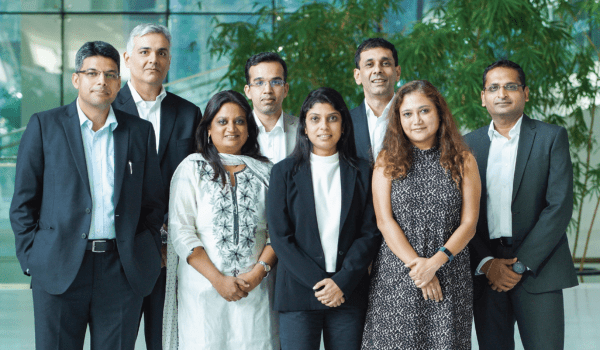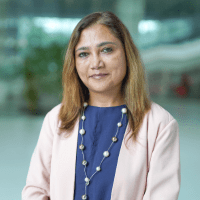Godrej Capital, a financial services firm, has recently completed three years of operation. The company asserts that women hold 50 per cent of leadership positions in the organisation.
The diversity journey of the company started with the appointment of Ruhie Pande as CHRO, who was the first employee and joined through internal mobility from Godrej Properties within the Godrej group. The journey gained momentum when Manish Shah took over as MD & CEO.
The company aimed to achieve its diversity goals from the outset and conducted market mapping and interviews with numerous candidates to ensure equal representation of men and women in the top management team. This approach resulted in a 50 per cent representation of women in the team reporting to the MD.
The company strived to maintain this trend by aiming to have both male and female representation in the final interview for all key roles, resulting in a 33 per cent representation at the strategy level. Although the company desires to have more gender diversity in leadership roles, these measures were taken to achieve their goal.
The company has implemented several initiatives to attain the objective of 35 per cent female representation in the workforce. One of these initiatives is the ‘Women in Sales’ program, which recruits women directly from college for sales positions and trains them for leadership roles within the sales division.
“We want to ensure that everyone understands how to interact appropriately with colleagues from different backgrounds, including avoiding derogatory language and using correct pronouns for LGBTQI individuals. We are conducting sensitization programs throughout the organisation to ensure everyone knows how to behave when working with someone from a specific cohort.”
Ruhie Pande, CHRO, Godrej Capital
Pande shares that the company aims to have 5 per cent of the 35 per cent women representation target to be fulfilled by individuals from the LGBTQAI+ and PWD communities. To achieve this, the company is partnering with organisations like Pride Circle and running internship programs to hire individuals from these communities and support their growth within the organisation. These efforts are all aimed at increasing diversity and representation within the company.
To foster a diverse workforce, the company also places great importance on equity, which entails creating a fair and level playing field for all employees. To this end, the company has established an Employee Resource Group named ‘sheRises’ that is dedicated to creating equal opportunities for all new diverse cohorts, with a particular emphasis on women. The group has also played a critical role in identifying the specific needs of women seeking to advance up the management ladder.
Moreover, the company has introduced programs that aid women in transitioning from junior management to mid-management and then to senior management, as they often feel hesitant in male-dominated environments.
Pande mentions that to tackle this issue, the company launched a program called Headway, which offers mentoring, coaching, training, and learning opportunities to support women in climbing up the ladder.
During Women’s Day celebrations, the company organized a program named ‘Espresso Yourself,’ where senior women leaders took women out for coffee sessions to gather suggestions. At one such session, a woman shared her struggle with under-confidence while presenting to senior management, highlighting the specific challenges faced by women.
“We are dedicated to identifying and addressing these challenges through programs such as sheRises and Headway, which provide women with the necessary support to excel in leadership positions,” she further explains.
The company has proposed three policy changes to ensure equity for women, including safety caps for those who stay late, work-from-home options during menstrual cycles, and flexible work arrangements for new mothers returning from maternity leave. These policies promote equal treatment and support for women in the workplace.
Pande also emphasises the company’s commitment to ensuring equity for people with disabilities by providing accessibility features in their offices such as wheelchair ramps and sensor-enabled lifts for the visually impaired, as they continue to focus on diversity.
The last step towards promoting diversity at Godrej is ensuring inclusivity. The company’s “Included” program aims to promote sensitivity as the workforce becomes more diverse. “We want to ensure that everyone understands how to interact appropriately with colleagues from different backgrounds, including avoiding derogatory language and using correct pronouns for LGBTQAI+ individuals. We are conducting sensitization programs throughout the organisation to ensure everyone knows how to behave when working with someone from a specific cohort,” says Pande.
Finding suitable female candidates for top-management roles can be challenging when there is a shortage of internal candidates. However, Pande believes that this is not an insurmountable obstacle. “I don’t think it’s a challenge at all. It’s a matter of intent, and sometimes you have to take risks to make it possible,” she says.
Pande cites examples of how the company found three excellent female candidates for various top-management roles, considering their family and childcare responsibilities and offering flexible work arrangements with fair pay. “It’s just about your intent. Sometimes you need to be patient, interview more, and be willing to be flexible. If DEI is at the heart of your people’s philosophy, it’s not a challenge at all.”
Ageism Bias
Apart from diversity issues, the company has also been resisting ageism bias at the workplace through various programmes and initiatives.
Out of their 500 employees, 92 percent are millennials and Gen Z, which may make the remaining 8 percent feel marginalized due to ageism.
However, the company believes that age bias can happen across generations.
Pande explains that the company endeavours to offer fair opportunities and challenges to all young leaders, regardless of age.
She further elaborates that the company believes in nurturing potential and growing talent from within the organisation, which helps to minimize ageism bias and ensures that younger employees have the opportunity to flourish.
As a measure to tackle age bias, the company ensures that job descriptions for new roles do not contain any age requirements. Instead, the focus is on an individual’s skills, potential, and market understanding. “We provide equal opportunities for learning and development to all employees, regardless of their age or background, to eliminate age bias in promotions and growth within the company,” says Pande.
The company also offers sensitivity training to its managers aimed at eliminating age and gender biases from the hiring process.
“Our training teaches managers the appropriate behaviours and questions to ask during the hiring process to ensure that all candidates feel valued and included in the organisation,” Pande shares.
Technology can also exacerbate age bias in a multi-generational workforce as younger generations tend to be more tech-savvy than their older counterparts.
To bridge this gap, Pande shares that they have implemented various training programs and initiatives, including providing all employees access to technology and offering roles that require the use of technology at all levels.
Reverse mentoring is a common practice used to address the issue. To address the technology gap, the company has launched a performance management app for its Gen Z employees, where they can fill out the necessary details and data. Younger employees are generally more comfortable with technology and are less inclined to use a cumbersome system. Conversely, senior employees may not be as technologically adept.
Pande concludes that the company provides assistance to all employees at each level through technology teams to help them learn and work with technology efficiently. In addition, the HR department conducts fair share studies to guarantee that all age groups are represented and have equal opportunities for growth. Pay studies are also conducted to identify any age-based compensation disparities. The main goal is to ensure that all employees, regardless of their age, have equal access to technology and growth opportunities within the organisation.




